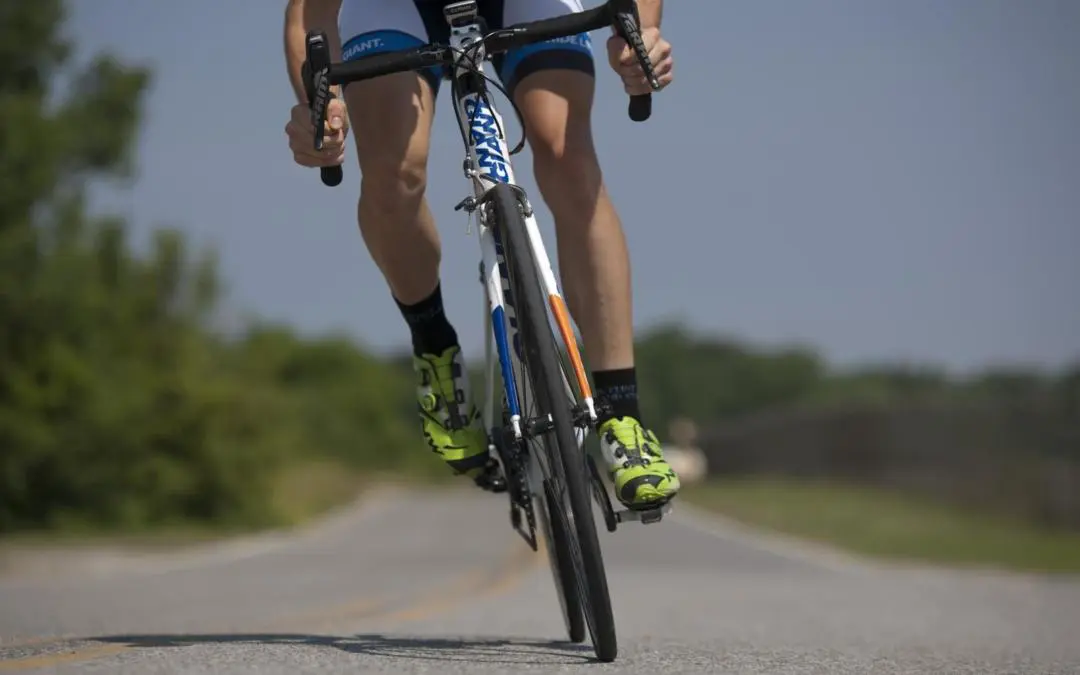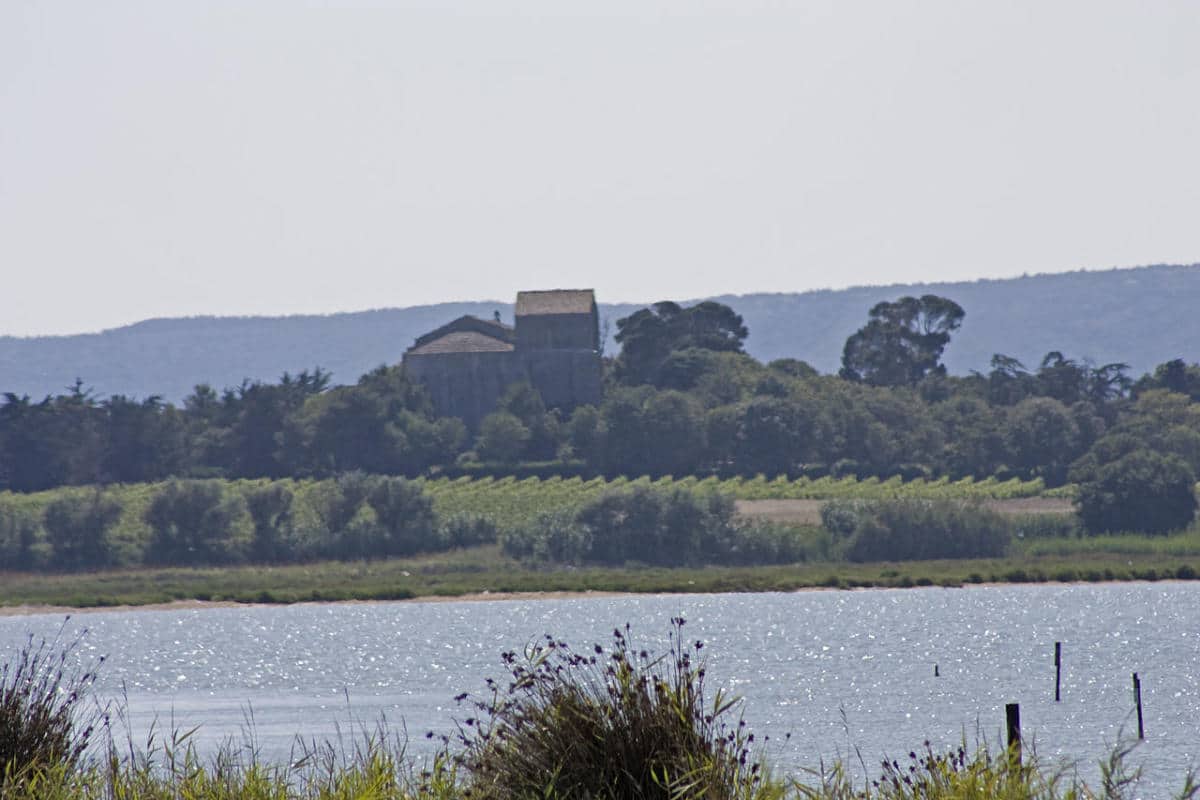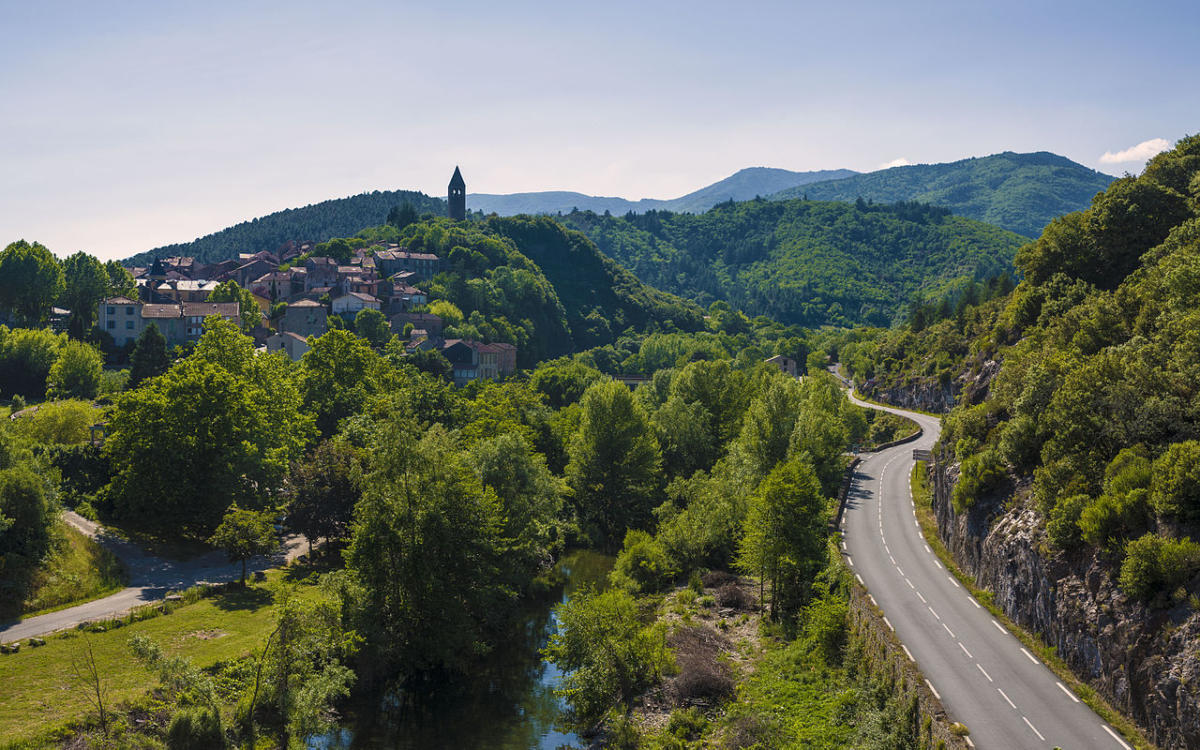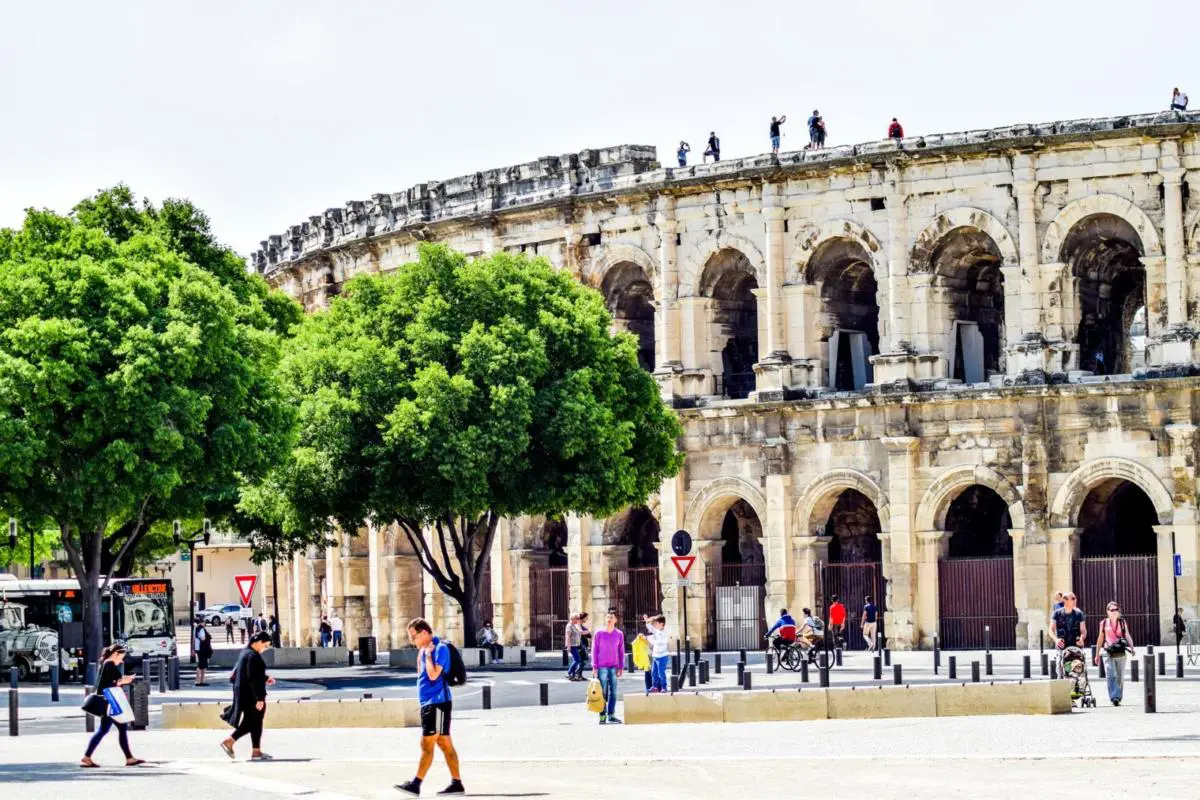Languedoc is a region of vast diversity, both culturally and geographically, with a long, rich history. More importantly for the cyclist, though, the region is endowed with thousands of kilometers of quiet sun-kissed roads that make cycling in Languedoc such a pleasure.
Languedoc stretches over 300 km along the Mediterranean, from the border of Spain to the mighty Rhône River. Languedoc has astounding gorges, sandy beaches and, of course, vineyards. This is the world’s largest wine growing region, so you are never far from vines. Into culture and history? The Romans settled in this area over 2000 years ago and generously left us many outstanding remnants, many of which are ideal to cycle to. You’ll find aqueducts, bridges and temples throughout the region, and most of the main cities you visit today began as Roman towns. Fast forward a thousand years or so and you have many medieval circulade villages, unique to Languedoc. Of course there is ‘Cathar Country’, a large area, mostly in the modern-day departement of Aude, that is dotted with the spectacular ruined villages and castles that are all that remain of the Cathar religious sect that flourished here many hundreds of years ago.
Following are a few rides that I am sure will not disappoint, each focusing on either an area of great beauty (Gorges du Tarn, Pic St. Loup), a place of historical import (Pont du Gard / Aigues-Mortes), or simply a popular place that you might like to ride to, instead of taking the car (Montpellier Beaches). The truth is though, if you have a bike and wish cycling in Languedoc, just hop on and start pedaling. You’ll be happy you did!
Bonne Route!
Montpellier Beaches > Maguelone Cathedral
Distance: 30 km.
Difficulty: Easy.
From the Lez river in Montpellier, hook up with the cycling path and simply follow it all the way to Palavas, a beach resort town south of the city. From Palavas turn right and follow the beach till you reach the isolated cathedral of Maguelone. After visiting Maguelone, head to the beach and ride along the sandy track before turning north and around the other side of the cathedral. Cross the canal and ride north. Keep an eye out for pink flamingos! Hook up with the first bike path you see on your right and head towards Villeneuve de Maguelone. In the village, turn right on Boulevard du Chapitre and ride out to meet the cycling path of the D186, which will take you along the Etang de l’Arnel and back to the Canal du Rhône à Sète, where you pick up the path that will take you back to Montpellier.
Sommières > St. Guilhem-le-Désert
Distance: 73 km.
Difficulty: Intermediate
This rewarding day ride begins in Sommières, a former Roman town, which sports a 190-meter long Roman bridge and a very famous Saturday morning market. The route takes you through the large wine appellation of Côteaux du Languedoc, past the dominating presence of Pic St Loup, and down into the wild and beautiful Hérault Gorge. The long day ends in one of the best-preserved villages in France, Saint Guilhem-le-Désert. Take the D22 then the D1 to Galargues. Go north out of Galargues and take the D120, D107 and a tiny no-name road to Vacquières. Go south on the D109 now to Flaunès where you turn right at the ‘La Roque’ sign in the village and ride on the little side road all the way to Saint-Mathieu-de-Tréviers. Hook up with the D1 here and follow it to the west side of Pic St Loup. Turn left onto the D122 and ride it into St. Martin-de-Londres. Fill up your water bottles at the fountain in the main square before heading steeply uphill. After you get to the top you have an exhilarating descent into the Hérault Gorge. Climb out of the gorge and turn right onto the D4 in Causse-de-la-Selle. The rest of the ride is either flat or downhill (into the Hérault Gorge again), and a real pleasure.
Béziers > Olargues
Distance: 59 km.
Difficulty: Intermediate.
A ride that takes you from the ancient city of Béziers, north through the vineyards of Hérault, then up the beautiful Orb River to the pretty village of Olargues. From Béziers follow the D19 out of town, turn left onto the D39, and then a right onto the D14. Continue straight north till you see the sign for the Abbaye de Fontcaude. Take this quiet road to the hidden Abbey, where you can fill up your water bottles at the fountain – the same fountain that has been quenching the thirst of pilgrims for plenty of centuries. Keep on till you run into the D20, then turn right and head back to the D14. Now head north, which takes you deep into the hills along the Orb River, passing by pretty Roquebrun on the way. Once you reach Tarassac you will cross the Orb for the last time, and take the D908 for a little way into La Travalle. From here you need to find your way to the Voie verte, which begins in the village, just north of the D908. This multi-purpose leisure path will take you right into the center of Olargues, a few km along the valley.
Nîmes > Pont du Gard
Distance: 32 km.
Difficulty: Intermediate.
This history-filled loop starts in Roman Nîmes, with its perfectly preserved amphitheater and temple, to the Pont du Gard, a UNESCO World Heritage Site, and one of the best examples of Roman technological prowess to be seen anywhere in the world.
Starting in front of the train station head right and follow the signs for Uzès, which will get you eventually onto the D979. This road takes you up into the brushy hills north of the city. Once you get over these low hills you have a really great descent down to the Gardon river. Make sure to stop and enjoy Pont St. Nicolas, the medieval bridge you will be crossing the river on. After the bridge, take the first right onto the road that goes to Sanilhac-Sagriès and Collias. From Collias follow the Route d’Uzès, then turn right onto Route de Collias, which will take you to the D981. From there turn right and you have a fast ride to the access road to the Pont du Gard. For the return trip, retrace your pedal strokes to Collias, cross the river and climb up the several kilometers to Cabrières, then head west through Poulx, till you come back to the D979. Turn left and it’s an easy ride back to Nîmes.
Nîmes > Aigues-Mortes
Distance: 58 km.
Difficulty: Easy.
A mainly flat route from Roman Nîmes to Medieval Aigues-Mortes, near the Mediterranean coast. On the way you ride through the vineyards of the AOC Costières de Nîmes then the wild and windswept Camargue.
From Avenue Jean Jaurès go south till it turns into the D42. Continue to Caissargues where you catch up with the D135, following it till you see the sign for Générac. Turn left here and ride south to the village, then take the D14 towards St. Gilles. From St. Gilles take the main road out of town and over the canal, staying on it till just after you ride under the train tracks. Take your first right onto tiny D179.The D179 takes you through the Petite Camargue till it dumps you out onto the D58 at the small hamlet of Montcalm. From here it’s a fast ride the last few km to the walled town of Aigues-Mortes.
A window for cycling tourism
Initiated by the Fédération Française de Cyclotourisme, www.veloenfrance.fr is the first portal on cycling tourism with more than 500 mountain bike circuits which can either be downloaded onto a GPS or printed. It suggests 500 places to eat and stay (gîtes, hotels,restaurants, youth hostels) which specifically cater for cyclists, and 1200 interesting tourist sites to visit on the way.
This article was written by Gerry Patterson and was first published in Le SUN magazine.
Gerry Patterson lives in Nîmes with his wife, Shoko. When not updating his cycling blog, adding routes to his website Cycling in Languedoc, or writing articles for Freewheeling France, he can be seen – that’s right – cycling around Languedoc, searching out new and interesting rides.
Laurence was born in Alès. She left after her studies to be an au pair in London. She visited Glasgow for a week end and stayed for 2 years. After returning to Montpellier for five years, she finally settled back in Bracknell, UK, where she was working in an IT company. She came back to France when her twins were toddlers, created LE SUN in 2006, and since then has been reveling in discovering her region, the Occitanie.
All articles by: Laurence Boxall





